CROPSCAN, Inc.
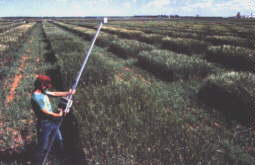 | 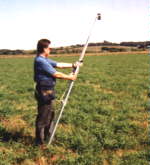 |
|---|
 |  |
|---|
The CROPSCAN, Inc. Multispectral Radiometers (MSR) were developed to improve the assessments of various factors on plant health and yield. Visual assessments are subjective, laborious, tiresome and expensive. Use of CROPSCAN, Inc. MSR Systems make assessments objective, fast, easy and relatively inexpensive.
Every substance emits, absorbs, transmits or reflects electromagnetic radiation in a manner characteristic of the substance. This is the underlying principle involved in all remote sensing. By measuring the quantity of radiation in each of the wavelengths, the characteristics of the substances can be defined. In practice, only certain selected wavelength bands need to be chosen to discriminate between selected characteristics of substances. For the CROPSCAN radiometer system, narrow band interference filters are used to select certain bands in the visible and near infrared (NIR) regions of the electromagnetic spectrum. This region is useful for quantifying the reflectivity of canopies as affected by stresses of various kinds. The NIR bands of 750-900 nm are particularly useful for detecting and estimating the severity of foliar disease of plants. Longer wavelengths in the NIR may be useful for estimating biochemical content of plants.
The CROPSCAN multispectral radiometer systems consist of a radiometer, DLC or A/D converter, terminal, telescoping support pole, connecting cables and operating software. The radiometer uses silicon or germanium photodiodes as light transducers. Matched sets of the transducers with filters to select wavelength bands are oriented in the radiometer housing to measure incident and reflected irradiation. Filters of wavelengths from 450 up to 1720 nm are available.
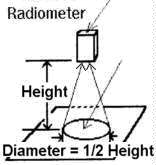 |
|---|
In the field the radiometer is held level by the support pole above the crop canopy. The diameter of the field of view is one half of the height of the radiometer above the canopy. It is assumed that the irradiance flux density incident on the top of the radiometer (upward facing side) is identical to the flux density incident on the target surface. The data acquisition program included with the system facilitates digitizing the voltages and recording percent reflectance for each of the selected wavelengths. The program also allows for averaging multiple samples. Ancillary data such as plot number, time, level of incident radiation and temperature within the radiometer may be recorded with each scan.
Each scan, triggered by a manual switch or by pressing the space key on a terminal or PC, takes about 2 to 4 seconds. An audible beep indicates the beginning of a scan, two beeps indicate the end of scan and 3 beeps indicate the data is recorded in RAM. Data recorded in the RAM file are identified by location, experiment number and date.
The design of the radiometer allows for near simultaneous inputs of voltages representing incident as well as reflected irradiation. This feature permits accurate measurement of reflectance from crop canopies when sun angles or light conditions are less than ideal. Useful measurements of percent reflectance may even be obtained during cloudy conditions (cirrus to light stratus) with incident irradiance levels down to approximately 300 watts per square meter. In cumulus conditions (white puffy type) it is best to readings with the sun's rays are not obstructed by the heavy cumulus cloud. The ability for use in cloudy conditions can be advantageous, especially when traveling to a remote research site only to find the sun somewhat obscured by clouds.
Percent reflection of radiation of the various wavelengths is influenced by any condition that influences the normal growth of plants. The radiometer is therefore particularly useful as an objective and efficient means of estimating the effects of any condition that affects plant health, yield, or quality of the crop. Possible applications (customer or user responsible for model development) are:
References to Publications/Presentations based on the use of CROPSCAN, Inc. MSR Systems
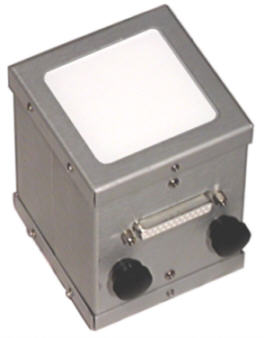 |
|
MSR5 Spectral Bands (approximate visual colors) shown over typical green vegetation reflectance
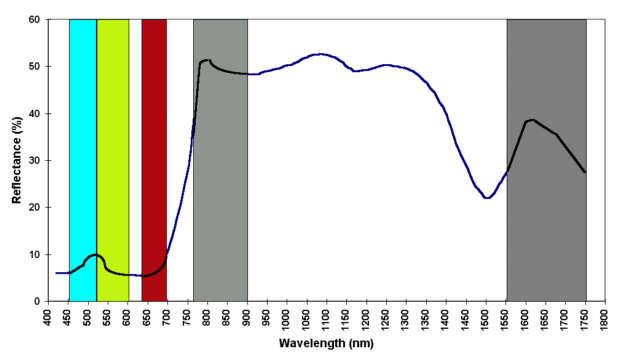 |
 |
|
MSR87 Spectral Bands (approximate visual colors) shown over typical green vegetation reflectance
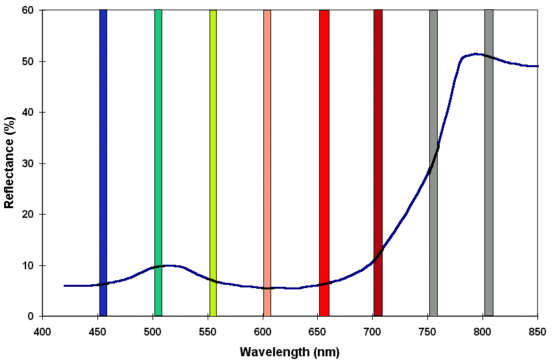 |
|---|
 |
|
Available MSR16R Spectral Bands (approximate visual colors) shown over
typical green vegetation reflectance. Up to a maximum of 16 of any of the following may be installed with order.
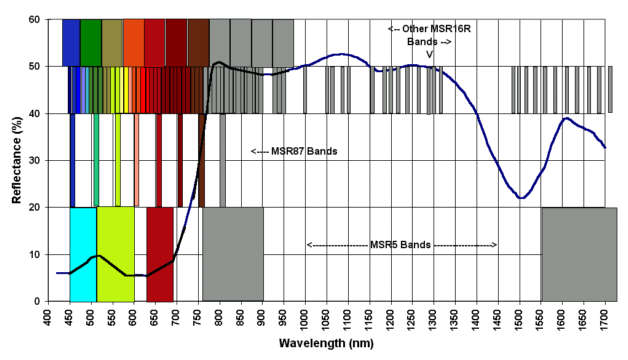 |
Select from the following for more information:
 CROPSCAN, Inc. Home Page
CROPSCAN, Inc. Home Page
©2018 CROPSCAN, Inc.
all rights reserved